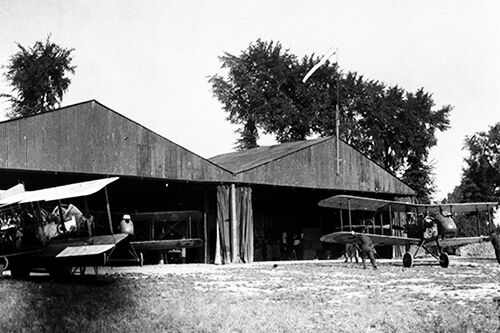
The battle waged from above
Published:
Categories:
The enduring images from the Battle of the Somme are of soldiers climbing out of the trenches to face the onslaught of machine gun fire and barbed wire in No Man's Land. But even years before the start of the war, prescient officers saw the future of air warfare.
Captain Bertram Dickson said in 1912 that any future war, "would lead to the inevitable result of a war in the air, for the supremacy of the air, by armed aeroplanes against each other. This fight for supremacy of the air in future wars will be of the first and greatest importance."
In the week before the land battle began, the Royal Flying Corps (RFC) had been tasked with maintaining air superiority, gathering reconnaissance, and directing the British artillery bombardment of the German front line.
As the land battle began, these air activities continued at a frenetic pace and the ability of British airpower to affect the result of a battle was first proven in the Battle of the Somme.
In particular, RFC artillery spotters were key in directing artillery to more than 8,600 targets such as supply depots, troop reinforcements, and enemy artillery installations.
Bombers also attacked more than 300 targets from the air with 17,600 bombs. And ground attack aircraft helped slow enemy advances and counter attacks by attacking the front line, supply columns, and troop movements with machine gun fire.
Yet the Royal Flying Corps paid dearly for their valuable service, with 499 aircrew killed, wounded, or missing and a loss of almost 600 aircraft.